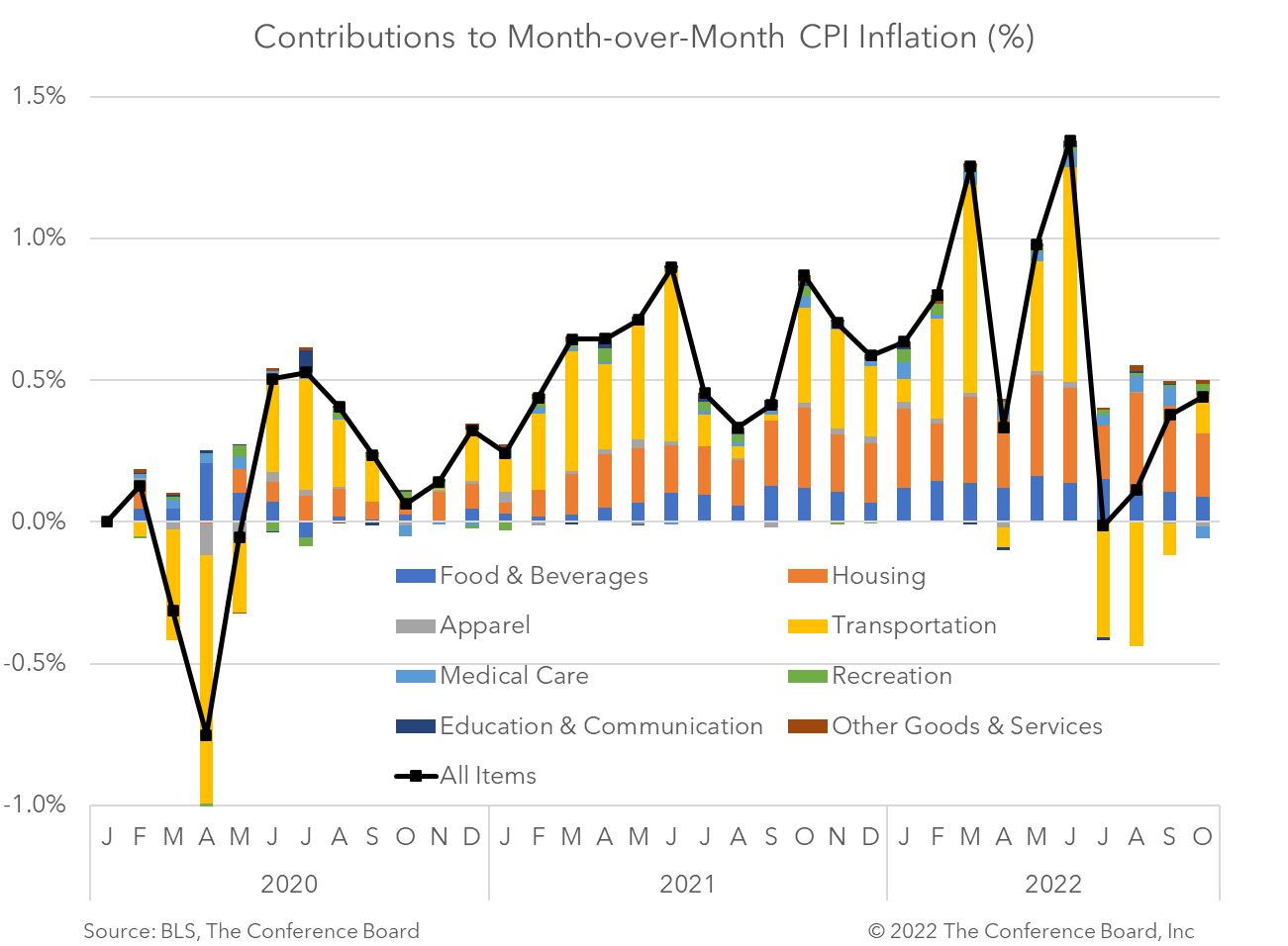
The headline Consumer Price Index (CPI) eased somewhat in October along with Core CPI, which excludes food and energy. While these data show some progress in the Fed’s fight against inflation, we continue to expect additional interest rate hikes over the coming months and a recession to begin around the end of the year. Headline CPI slowed to 7.7 percent year-over-year in October, vs. 8.2 percent in September. In month-over-month terms, however, this topline inflation metric was 0.4 percent—flat from the month prior. Many index components saw price gains moderate for the month, and some (including used vehicles and apparel) saw prices decline. However, shelter prices remained high and energy price gains accelerated. Core CPI also moderated in October. The core index, which is total CPI less volatile food and energy prices, rose by 0.3 percent month-over-month in October, vs. 0.6 percent in September, and 0.6 percent in August. In year-over-year terms core CPI was rose to 6.3 percent from 6.6 percent in September.Insights for What’s Ahead
October Inflation Highlights

Fed Doves Get Nice Holiday Gift as CPI Inflation Drops
December 18, 2025
FOMC Decision: Do Three Dissents Mean a January Pause?
December 10, 2025
Fed December Decision: Not So Clear Cut
December 09, 2025
September Inflation Pause Bodes Well for Fed Cut
December 05, 2025
September Retail Sales Show Consumers Taking a Breather
November 25, 2025
New Truce Offers Stability after US–China Trade Plummeted in 2025
November 05, 2025
